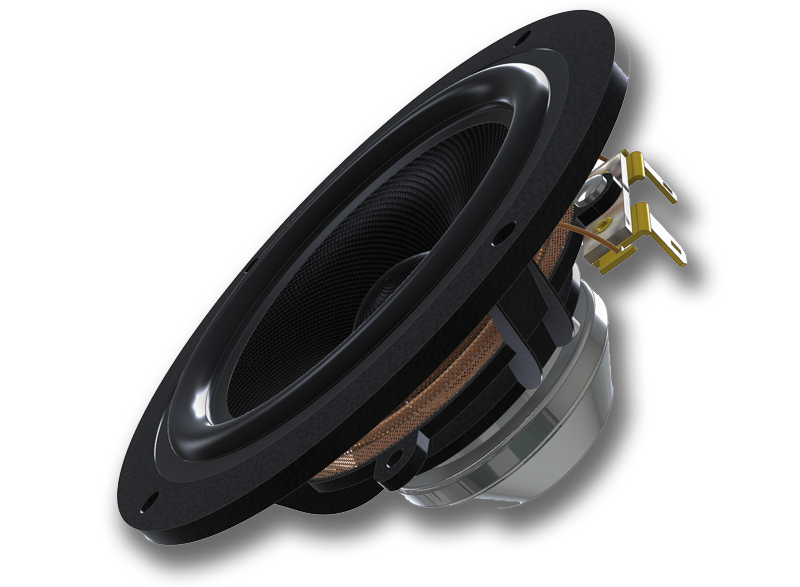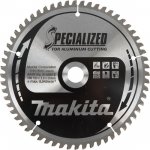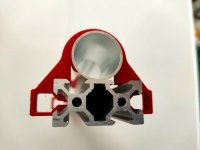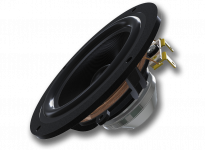It sure does... anyone that has seen "The Ultimate Small Speaker" thread has seen a chopped frame 10F.

I've pm-ed bcodemz to gain some information. From what I could find it was Kevin K. over on the PE Tech forums that did the work. Sadly I'm not a member there (yet) so I can't ask him directly. We have a Kevin K. (probably the same guy) here but he's been inactive for quite some time.
I think the trick will be to cut the frame while building up as little heat as possible. I'll create a saw template as an enclosure, closed off on all sides to minimize possible damage.
I've pm-ed bcodemz to gain some information. From what I could find it was Kevin K. over on the PE Tech forums that did the work. Sadly I'm not a member there (yet) so I can't ask him directly. We have a Kevin K. (probably the same guy) here but he's been inactive for quite some time.
I think the trick will be to cut the frame while building up as little heat as possible. I'll create a saw template as an enclosure, closed off on all sides to minimize possible damage.
Attachments
Last edited:
Ronald,
You are one crazy DIYer... 😀 😀
Good luck with the project and we shall be following your work eagerly.
You are one crazy DIYer... 😀 😀
Good luck with the project and we shall be following your work eagerly.
I think the trick will be to cut the frame while building up as little heat as possible. I'll create a saw template as an enclosure, closed off on all sides to minimize possible damage.
Heat problems in speakers and mostly the magnets of speakers is a little blown-up by folks.
Yes, magnets can eventually demagnetize, but as long you don't hit the Curie temperature, magnets mostly will get their strength back again.
Most neodymium magnets will loose a bit of their strength about 100-120 °C. But that is NOT permanent.
So in this case we have a frame, a pole plate and than the magnet.
Even without any extra measures, I doubt that you will get the magnet up to 100 °C.
But I also understand you like to be precious about your new little babies.
So if anything, I would fit them in an aluminum (or steel) jig to suck up the heat even more and use a fan or so to force some airflow.
Maybe you are the first in the world to build an array with 10F ?
Looking forward to "hear" about your impresion of the sound difference compared to the "maybe-trusty TC9".
What a road you have been on. First the crack of tower one, then failing drivers!
Looking forward to "hear" about your impresion of the sound difference compared to the "maybe-trusty TC9".
What a road you have been on. First the crack of tower one, then failing drivers!
glue?
If I understand the 10f motor structure, the ring magnet is glued between the pole pieces, one of which is then mechanically fixed to the basket. The pole pieces are unstable - the gap tries to close - probably easily disturbed if the glue softens too much.
I wouldn't expect trouble with normal epoxies below 80 to 100C, but transverse forces on the magnet/pole pieces should be avoided when hot.
Even "N" grade Neo magnets can run at over 65C for years.
What about the surround - it's adjacent to the source of heat? Butyl rubber is OK to ~120C, so if it's that it's probably also fine. Even if long as nothing that could deform the surround is touching it, all should be well.
Perhaps it would be fun to give Scanspeak another opportunity to demonstrate good customer service by asking for materials/temperature data.
Ken
If I understand the 10f motor structure, the ring magnet is glued between the pole pieces, one of which is then mechanically fixed to the basket. The pole pieces are unstable - the gap tries to close - probably easily disturbed if the glue softens too much.
I wouldn't expect trouble with normal epoxies below 80 to 100C, but transverse forces on the magnet/pole pieces should be avoided when hot.
Even "N" grade Neo magnets can run at over 65C for years.
What about the surround - it's adjacent to the source of heat? Butyl rubber is OK to ~120C, so if it's that it's probably also fine. Even if long as nothing that could deform the surround is touching it, all should be well.
Perhaps it would be fun to give Scanspeak another opportunity to demonstrate good customer service by asking for materials/temperature data.
Ken
Well, here we go again! 🙂
Should be able to add a few more hundred pages to this thread! 😀
No doubt! Not that it is a goal in itself 🙂.
Ronald,
You are one crazy DIYer... 😀 😀
Good luck with the project and we shall be following your work eagerly.
Thank you Zia, for confirming I'm crazy 😀.
Maybe you are the first in the world to build an array with 10F ?
Looking forward to "hear" about your impresion of the sound difference compared to the "maybe-trusty TC9".
What a road you have been on. First the crack of tower one, then failing drivers!
I just hope that all others that have used this little marvel have better luck than me...
About the concerns of the driver frame cuts...
I have found a few people that have hacked up a driver frame, mostly in the Car audio forums. Using everything from Dremel grindstones or carbide cutting wheels and also a router with a template. I guess all of those generate quite a bit of heat.
I intend to cut the first with hand tools, just to get a feel for it. Before I use anything motorized. First step is building a jig.
I have found a few people that have hacked up a driver frame, mostly in the Car audio forums. Using everything from Dremel grindstones or carbide cutting wheels and also a router with a template. I guess all of those generate quite a bit of heat.
I intend to cut the first with hand tools, just to get a feel for it. Before I use anything motorized. First step is building a jig.
Hi Wesayso,
Can't you find some place which own a cnc laser cuting machine?
Of course it'll cost money but the one i've seen in use doesn't produce any debris and will cut the chassis as if it was made of ( warmed) butter. And even for 50 units it should not take this long ( if it can be done in one pass) reducing cost.
Can't you find some place which own a cnc laser cuting machine?
Of course it'll cost money but the one i've seen in use doesn't produce any debris and will cut the chassis as if it was made of ( warmed) butter. And even for 50 units it should not take this long ( if it can be done in one pass) reducing cost.
My initial though was a table saw with 10" metal cut blade.
I've used that on heatsinks for decades.
I've used that on heatsinks for decades.
I intend to cut the first with hand tools, just to get a feel for it. Before I use anything motorized. First step is building a jig.
Having cut a lot of aluminium recently I can strongly recommend a mitre saw / drop saw with a non ferrous blade. With the right jig it would give a great finish and be pretty easy. Relatively little swarf. Even with a single through cut the heat should not be a real issue.
Thank you Zia, for confirming I'm crazy 😀.
"But were never gonna survive unless, we get a little crazy" - Seal
Stay crazy and healthy my friend! 🙂
Having cut a lot of aluminium recently I can strongly recommend a mitre saw / drop saw with a non ferrous blade. With the right jig it would give a great finish and be pretty easy. Relatively little swarf. Even with a single through cut the heat should not be a real issue.
Interesting, something like this?
Attachments
That's them, listed as aluminium or non ferrous bladesInteresting, something like this?
Cuts like this
Attachments
Another journey begins...

I've received two drivers up front to start working on my tooling. First step: make a 3D model 😉.
(while waiting for parts to arrive)
I've received two drivers up front to start working on my tooling. First step: make a 3D model 😉.
(while waiting for parts to arrive)
Attachments
Last edited:
wesayso, I also recommend you use a blade lubricant for aluminum. This will allow clean cuts without galling.https://cdn.shopify.com/s/files/1/1567/3323/products/WLT_53B303_1400x.jpg?v=1505919423
- Home
- Loudspeakers
- Full Range
- The making of: The Two Towers (a 25 driver Full Range line array)



